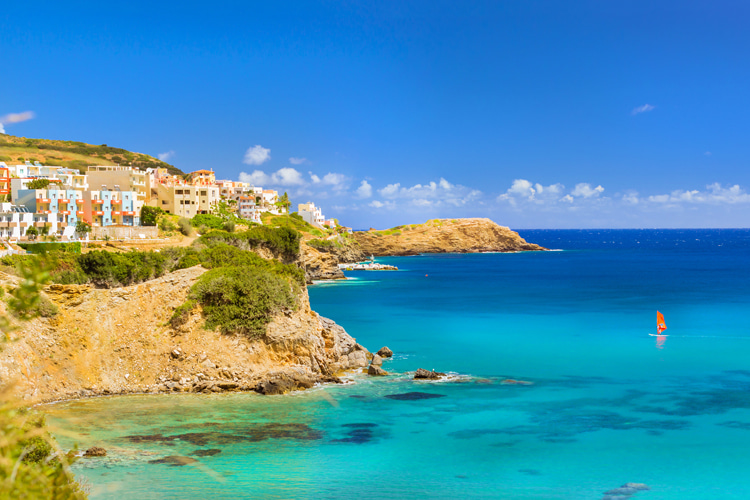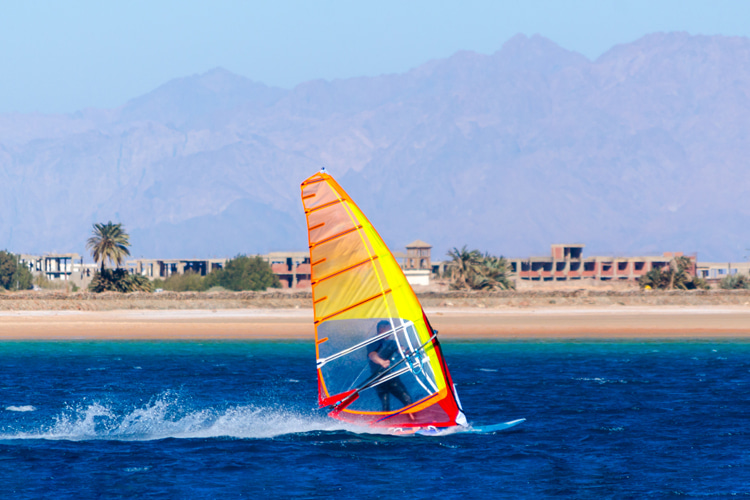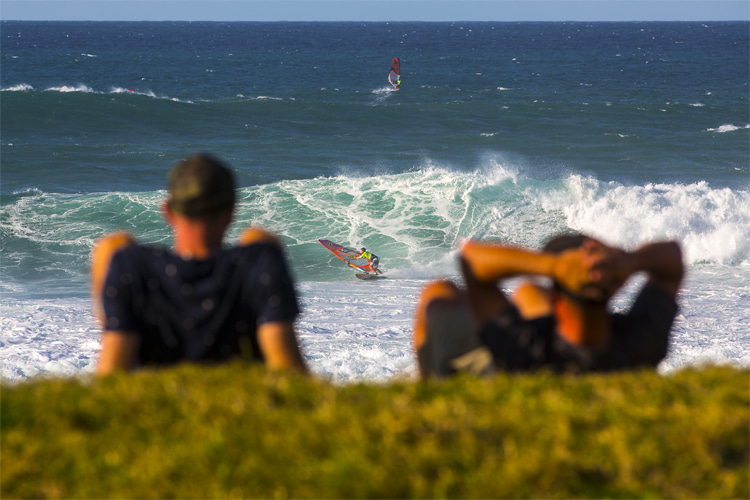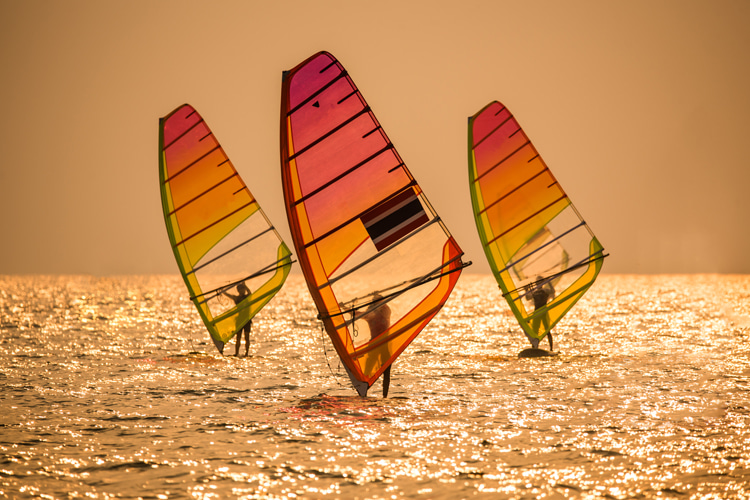How to plan your windsurfing holidays and travel
Whether it’s just a day trip or a six-month voyage, windsurfing means a journey for almost everyone who sails. Few can boast perfect sailing conditions in their backyard.
There are many centers around the world fully geared towards high performance sailing, some offering accommodation and tuition and equipment for a complete package.
Centers like this offer a range of boards and sails to suit local conditions.
Windsurfing vacation packages are ideal for those who are just Entry into shortboard sailing.
Before booking a holiday in a specific center, check that the equipment available is new and in sufficient quantity.
An alternative to a vacation at a windsurfing resort is to visit an area with top-notch rental equipment.
Experienced sailors who don’t need an instructor or lifeboat nearby will benefit the most from this choice.
It gives you the opportunity to explore different beaches and surf spots.

Plan your equipment needs
Both Maui, Hawaii and the Columbia River Gorge in Oregon/Washington, USA, for example, have an endless supply of excellent equipment for rent.
To accommodate such a large group of passing sailors, both locations have shops that offer great deals on used equipment, making both locations a good choice for sailors looking to purchase gear at bargain prices.
Some stores also buy equipment back or sell on consignment.
Even better deals are often found on the beach, where sailors returning to Europe unload unwanted gear the day before departure.
Buying boards and sails may be better if your vacation is longer than a few weeks.
Buying the best new gear available is no problem in Maui or the Canyon. In fact, you are spoiled for choice.
That said, if you’re looking for a shortboard; The only longboards you’re likely to see are in the rental shops or on the roofs of the passing racers.
An important point to keep in mind when traveling is that windsurfing gear is not standardized around the world.
If you’re traveling with your own gear, make sure you carry spares for anything unique to your rig, especially a spare mast base and fin screws/plates.
Failure to do so can spoil the fun and result in unplanned expenses.

A quick guide to popular travel destinations
Mother Nature is unpredictable at best, but you can improve your chances of finding good windsurfing spots by visiting areas at the time of year when they are most likely to have wind.
You cannot learn to waterstart and shortboard sail when the wind is less than 15-18 knots, which is about force 5.
Maui, Hawaii
Famous worldwide for wind and surfing, Maui is also an excellent place to improve sailors.
The best winds occur in summer from May to August, although surf is generally low at this time of year.
The biggest swells hit the Hawaiian Islands in winter, but trades are less reliable then.
The best months for wind and waves are May and October.
The Caribbean
Many of the islands in the Caribbean are excellent for sailing. Trade winds blow here year-round, but are most consistent from April to July.
The Dominican Republic and Puerto Rico are both developing strong reputations, and Puerto Rico is known for being cheap.
Aruba
The closest island to Venezuela, Aruba, is known for flat water sailing and strong offshore winds, especially in June and July.
There is wind most of the year, but September to November are the least reliable months.
Barbados
Further east in the Caribbean, Barbados has strong winds from December to March and also excellent wave sailing.
Cancun, Mexico
In the western Caribbean, Cancun is also the windiest from December to March.
Puerto Rico
This island is discovered by more sailors every year.
It’s still reasonably priced and has some of the best wave sailing in the Caribbean.
The wind is constant with small waves in summer. Winter has the best waves but less consistent wind.
Baja, Mexico
Located on the southern tip of the Baja Peninsula on the Sea of Cortez, Los Barriles and La Paz, Mexico, are becoming increasingly popular with shortboard sailors from the United States.
The area is still little known to European sailors.
There are a number of beaches for sailing and good facilities at some of the specialist windsurfing resorts.
The sailing season runs from November to March, with December to February being the most windy months.
The Mediterranean
Crete, Northern Sardinia, Southern Corsica and Tarifa are some of the best shortboard sailing spots in the Mediterranean.
In summer there is excellent sailing in the eastern Mediterranean on Crete and other surrounding islands.
The central Mediterranean, northern Sardinia and southern Corsica also offer steady winds and warm, clean waters.
Farther west, Tarifa is famous for strong winds but should be avoided in July and especially August due to the crowds.
The recommended months are May, June and September, but the wind can blow at any time.
The Canaries
Located in the Atlantic Ocean off the coast of Africa, the Canary Islands are very popular with European sailors.
It is at its windiest in the summer when there are both excellent waves, strong winds and flat water sailing.
Like Tarifa, you can expect to be sailing with sails as small as 3.5 square meters (37.7 square feet) or even smaller, at least at times during the summer months – June, July and August.

sailing kit
How much you should bring is a personal decision.
If you rent, all you need is your own wetsuit, harness and maybe sailing shoes (in case your rental board is slippery or if you are going to water in rocky areas).
A World Cup sailor can travel with up to 275 kilograms of equipment and up to twelve boards.
If you’re traveling light, you can get by with a board, a couple of sails, a two-piece mast and a set of booms.
All of your luggage can weigh less than 18 kilograms (40 pounds).
A travel checklist
- Passport, valid driver’s license, credit card, visa (if required);
- suncreamsunglasses, hat, sunscreen, camera;
- Handbook with local information;
- Blackboard;
- Two or three sails in sizes common to your destination, two-piece mast;
- adjustable outriggers;
- replacement fin, fin repair tab, fin bolts and fin bolt plates;
- replacement line;
- small repair kit, tape;
- wetsuit (shorty or vest only if going to the tropics);
- Soft roof rack that fits any car (few car rental companies can offer luggage racks);
- Flashlight;
- Calculator;
First aid kit
- Neosporin and peroxide to clean cuts and prevent infection;
- Cloth plasters (stick better than plastic);
- extra strength aspirin, antihistamines;
- lomotile and swimming ear;
- A meat tenderizer for stingray and jellyfish sting (Apply gently, do not rub and soak in hot water);
- A good set of tweezers, sharp scissors and an eye wash kit;
Travel closer to home
racks
Use a sturdy luggage rack that is firmly attached to your car.
Pad it to protect your board from damage, especially if you have a custom fiberglass board as these are generally not as durable as production boards.
Also pay attention to the choice of lashing straps – use webbing or something similar.
A padded board pocket provides added protection from impact and UV rays that degrade and weaken fiberglass.
Mast/rack clips are available to make life easier.
To prevent theft, get locks for your racks and boards. If you are traveling with more than two boards, you must stack them.
Place hard foam pads between the boards.
Tower racks, which use a center post with bars sticking out from the side, allow you to pull out any board you want without having to detach the entire stack.

Flying
The logistics of traveling with a bunch of sailing gear might seem daunting at first.
Taking the time to do a little advance planning can prevent unwanted adventures.
Your gear should be in well-padded bags, as baggage handlers are typically hired for brawn rather than finesse.
Be sure to clearly label all luggage inside and out.
Many airlines allow you to travel with two checked bags and one carry-on bag.
This means you can travel with your board and quiver bag together as one piece and one large tote bag.
Excesses often seem to be left to the whim of the check-in person, so luck is required.
Arrive early at the airport; You will need extra time to transport your gear and your luggage is more likely to arrive at the same time as you.
Bring soft roof racks – They are easy to pack and fit in most cars.
Jet lag
If you’ve just traveled halfway across the world to sail, chances are your body is a little out of sync with your surroundings.
If you’re suffering badly, you might not feel like making waves for a few days. However, it can be helpful to drink plenty of water during the flight.
One of the best ways to beat jet lag is to switch to the local bedtime as soon as you arrive, even if you need sleeping pills for the first few nights.
Words by Rob Reichenfeld | Windsurfer and author of “Windsurfing: Step by Step to Success”